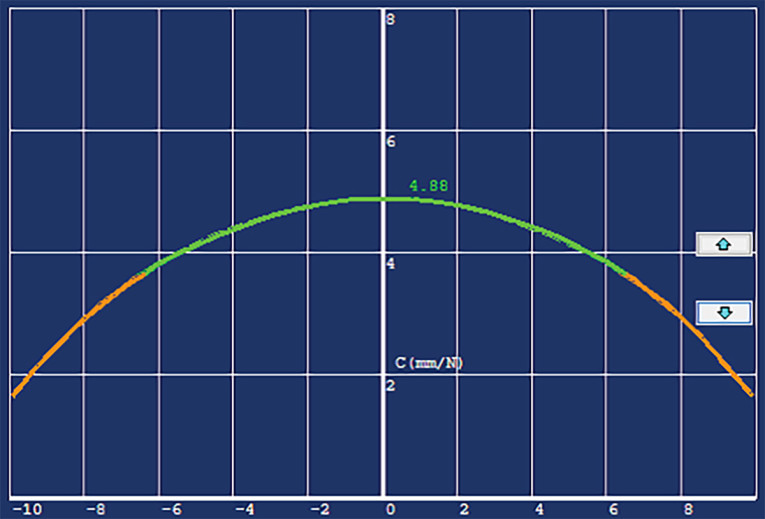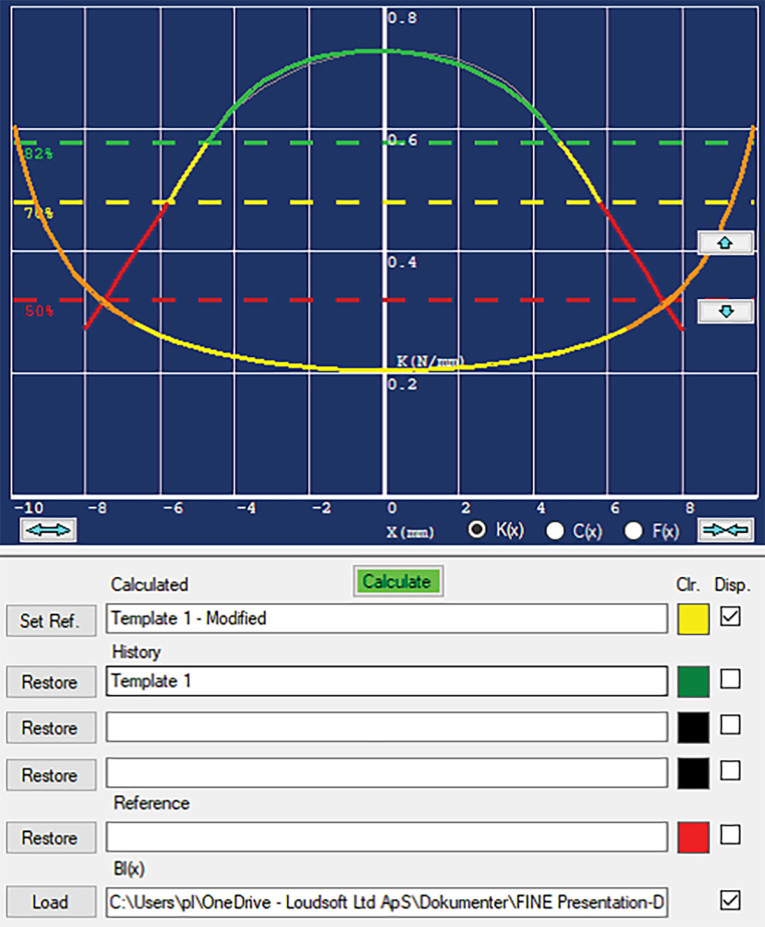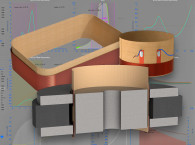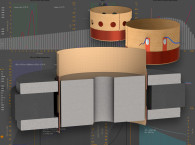
Basically the program enables users to configure a surround or spider by material type, dimensions, and thickness and then outputs the compliance curves similar to the Kms and Cms curves measured by a Klippel DA2 or KA3 analyzers. Figure 2 illustrates a surround template showing the various dimensions that can be manipulated and a model of inward and outward stretching of the model in Figure 3. From this point, the results can be viewed as Cx (Cms) and Kx (Kms) curves in Figure 4 and Figure 5, respectively. Importantly, you can also import simulated Blx curves from Loudsoft’s FINEMotor software and compare this to the Kx curve, as depicted in Figure 6.





The same routine is available for spider (damper) development. Figure 7 shows the template for dimensioning a flat spider, the selection of material type in Figure 8, the stretching modes shown in Figure 9, and finally, the Fx Force/Deflection curve shown in Figure 10.




If you do transducer engineering for a living, this is obviously an extremely valuable program for development of both spiders and surrounds.
This new software comes short after Loudsoft launching a range of new important features and updates for its FINEMotor PRO 2021 transducer development software, now adding calculations of voice coil inductance over excursion plus accurate BL(x) in difficult cases.
The FINE R+D X solution also gained now features, including a new Signal Generator with Pure Sine wave outputs and user set sweeps. Likewise, the latest FINEBox software update, which allows designing the ideal box for an existing driver, determining the ideal driver TS parameters for a given cabinet, now equates Max Flat Bass Reflex Responses for various TS-parameters, simulates calculations with round/oval and rectangular venting ports, and supports the design of ABR / Passive Radiators.

As a bit of background, Loudsoft is headed by Peter Larsen, who has been working in the loudspeaker industry since 1974. During his time working as an independent consultant Peter Larsen specialized in in-depth analysis of loudspeakers and manufacturing techniques, research concerning new components and materials, advanced Acoustic Finite Element modeling, new measuring methods, novel speaker design concepts and development of several customized products.
Based on his experience designing loudspeaker drivers over the years he developed a program to help him design magnet systems and voice coils much easier and quicker. In order to develop a user-friendly program Larsen asked Bob Harris, a former Chief engineer at KEF UK, to help him make the software better and also to convert it into a Windows- based application. Eventually, producers of loudspeaker drivers learned about the program and wanted to buy it. This program is now called FINEMotor and it is continuously being developed in order to meet the different demands from the customers.
In 1995, Larsen attended a seminar with Dr. Henrik Vollesen, who had finished his Ph.D. at Bang and Olufsen, where they discussed his analysis of the mechanical and acoustical properties of a loudspeaker unit with controlled directivity. Larsen realized the potential of using Henrik Vollesen’s ideas in the design of cones, if the ideas were developed into a full program. As Vollesen was an experienced programmer and Larsen had the practical experience designing drivers the two of them spent thousands of hours during six years to create a user friendly program which could help design cones, domes, surrounds, dustcaps etc., as well as optimizing the driver. The program also turned out to be a very useful tool as a problem shooter.
This program called FINECone helps speaker designers all over the world to design better, less expensive and more accurate acoustic designs in a shorter time than ever seen before.
Over the years several customers asked Larsen to create an intuitive and easy-to-use program to help them design loudspeaker boxes. Larsen and Harris developed the software with help from some of the world-leading designers of loudspeaker systems. The goal was to develop a flexible and intuitive program with features based on practical design work, which could be the preferred tool for the user in the daily system design work. The designers wanted a real high power nonlinear enclosure program avoiding extensive manual input and at the same time a program, which was able to simulate simple and more advanced designs in a simple way.
Larsen and Harris were able to make a program that is intuitive and user-friendly to the system designer. This program is called FINEBox. FINEBox is based on practical design work and gives you a very quick overview of the possible system design options.
Loudsoft also developed and offers its FINE R D Acoustic Audio Analyzer System, which is an acoustic measurement system for research and development of loudspeaker, headphone and microspeaker transducers and systems.

Expanding Material Library
Peter Larsen confirms that this new simulation and development tool for spiders and surrounds generated considerable interest among speaker designers and the company's many clients all over the world. And in the same way as it happens with the FINECone software for dome and cone Simulation, Loudsoft will continue to expand and update its library of materials that the user can choose for its projects in FINE Suspension (see Figure 8 above). Those materials available in the library are the result of actual products that companies such as Dr. Kurt Müller have measured and fully characterized, but any other supplier can contribute to the library.
Obviously, FINE Suspension will only get better as manufacturers supply complete sets of such parameters corresponding to new materials and components available. Peter Larsen welcomes those suppliers who wish to be included in the FINE Cone and FINE Suspension library and is ready to guide them on the data and file formats they can deliver. This obviously helps manufacturers of such loudspeaker materials to promote the features and advantages of their products among speaker engineers, at the critical design stage.
Manufacturers interested in being featured in the Loudsoft FINE materials libraries should contact Peter Larsen
For more information, visit the Loudsoft website at www.loudsoft.com. VC
This article was originally published in Voice Coil, April 2022.







